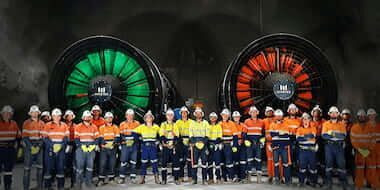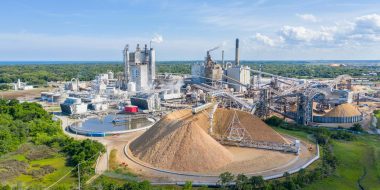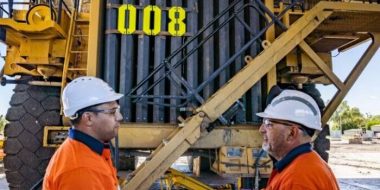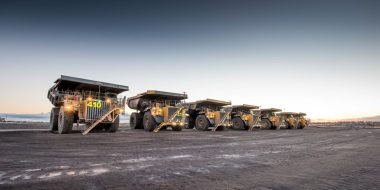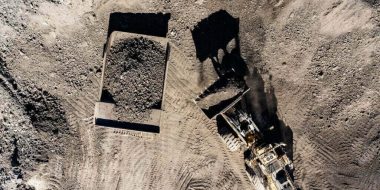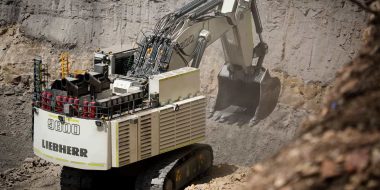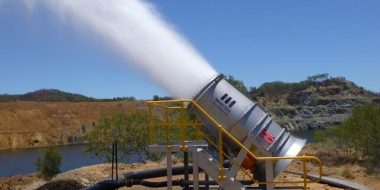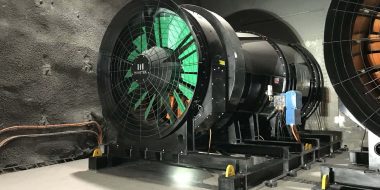From the moment mankind began the pursuit of mining the earth for valuable commodities, there has been one unchanged constant. The need for a safe, reliable and efficient supply of air to those underground. This can be achieved through adequate underground ventilation & air solutions.
Since the beginning of civilisation, man has toiled to extract stone, ceramics and later precious minerals to subsist, to improve his way of life and in time, to prosper. Following the onset of the industrial age, this pursuit has expanded on a vast scale and the need to supply air sustainably and in volume to underground operations has grown.
Today, however, while the pace at which mining is undertaken throughout the world has increased, the imperatives are changing. While the core responsibility of global miners is to provide sustainable operations, the need to constantly adapt and generate new efficiencies is ever-present. On top of the need for quality air supply, the industrial narrative is expanding with miners now charged with the mandate of achieving increased safety, profitability and environmental outcomes.
As the pace and scale at which mining continues into the future, there are three key enablers that are guiding this new era of mining & underground ventilation;
- Flexibility
- Technology
- Agility
1. Ventilation flexibility
The ability to adapt to change is vital in any industry and being able to tailor processes to meet operating conditions is key. In underground mining, the ability to target air supply in line with production requirements is one of the main challenges for operators. To meet this challenge, the concept of underground Ventilation On Demand (VOD) has been prevalent in recent years with systems designed to deliver airflow to workings based on scheduling and people movements.
However, the contemporary approach to delivering on-demand air supply in recent times has been to regulate airflow through complex and expensive infrastructure. The solution has been the application of Variable Speed Drives (VSD), Variable Frequency Drives (VFD) or Variable Voltage Variable Frequency Drives (VVCFD) – which control power to the underground ventilation system enabling airflow to be ramped up or down based on demand.
It is a given that high air velocities require high-pressure gradients and maintaining this pressure across a mining network comes at a high cost. In the post-2007 Global Financial Crisis (GFC) era and the subsequent mining downturn of 2013, the use of VSDs was seen as the logical way to tailor the supply of airflow based on demand, with the primary benefit being a reduction in power consumption costs. For an underground mine, has been estimated that ventilation systems can contribute to as much as 50% of power consumption needs. While there has been a heightened focus on driving down costs to enable economically sustainable operations, VSDs still present somewhat of a conundrum.
By nature, VSDs are a costly solution in themselves, with infrastructure and supporting control software ranging in the tens to hundreds of thousands of dollars. As expensive as they are, they are equally fragile, requiring dedicated, air-conditioned rooms and custom cabling for operation. While the benefits of Ventilation On Demand via the use of VSDs seem apparent, their use now almost seems illogical in the harshest of underground environments.
If only there was another way…

Enter Australian business Minetek, with a new approach to optimising airflow underground called Performance On Demand (POD). Minetek has developed an innovative approach to optimising air circuits enabling a shift away from requiring costly VSDs. This is certainly a watershed moment in underground ventilation. Able to be manually or autonomously controlled, the mechanically driven solution delivers the required flexibility for operators by tuning the dynamics of the airflow over the system’s innovative impellers.
By mechanically controlling the flow of air over the impellers – not the supply of power to the fan – power consumption is optimised and can be maintained at a significantly lower level. Minetek has been able to deliver up to a 50% reduction in power consumption costs, all while enabling operators to maintain flexibility in line with production and scheduling requirements. From a broader perspective, POD considers the new imperatives faced by miners – by actually driving down operational costs and in
turn yielding improvements in environmental outcomes.
This new underground ventilation approach delivers true flexibility whilst improving profitability and the long-term viability of underground operations

2. Underground ventilation technology
They say necessity is the mother of all invention and underground mining has a rich history of reflecting this expression. Driven by necessity, the mining sector has been constantly innovating to deliver safe, reliable and efficient operations underground.
Technology in mining has evolved with mankind. From the ancient use of tools to extract precious metals, to the use of black powder explosives to break apart large rocks in the late middle ages, mining has been a proving ground for new technologies for millennia.
Given the severity of underground conditions, the appetite for the development of enabling technology has maintained pace if not exceeded that of life above ground. Driven by the need to ensure safety, improve operational efficiencies and focus on reducing environmental impacts, mining has been an eager, albeit cautious adopter of new technologies.
Over the past two decades, in particular, the shape of technology in mining has moved towards new underground ventilation themes. Automation, optimisation, digitisation and even electrification are the new focus for underground miners, as organisations explore new and integrated ways to meet their safety, profitability and environmental objectives.

Underground ventilation is a tremendous lever in achieving progress against all three objectives and the application of new technologies can have a significant impact. Now, the key drivers in underground ventilation are very much about the interoperability of disparate systems within the operating layer and automating processes to maximise performance.
For years the requirement for ventilation has fundamentally been to meet a minimum volume and pressure requirement; however, the evolved mine now recognises the need to optimise assets and processes – like every other aspect of production – to extract maximum efficiency, drive down operating costs and increase profitability.
Minetek has at its core a focus on innovation and is relishing the opportunity to challenge the status quo in the design, implementation and operation of an underground ventilation system. Outside of MINETEK’s radical approach to the design of fan systems, the focus is squarely on integrating with mine systems to enable autonomous operation. Performance On-Demand is an excellent example of applied technology and Minetek are moving beyond the focus on reducing power consumption to explore truly responsive operation. While Radio Frequency Identification (RFID) technology has been around since the mid-1940s, its application in the industrial world is now connecting opportunities to improve processes in mining.
Minetek has developed an innovative new approach to optimising air circuits by integrating RFID technology to trigger its Performance On-Demand ventilation system and target air delivery based on vehicle movements. The approach is a game-changer in enabling operators to effectively reduce airflow to parts of the mine with no scheduled activity, maintaining airbag inflation levels at a minimum and reducing power consumption costs exponentially.
By automating triggered airflow and removing the need for human intervention, both safety and operating performance can be optimised. Connecting modern ventilation technologies to leverage data and driving predictive processes is the path forward to achieving true operational efficiency.

3. Ventilation agility
Agility is defined as being able to move quickly and easily. Being nimble, lithe and spry. In recent years the term agile has been adopted in the project management field, characterising the approach to dividing tasks into short phases with a frequent reassessment of plans and priorities.
Although coined within software development circles, where the pace of change is rapid, this definition of agility is certainly apt for the continuously changing environment in which underground mining occurs. By definition, a mine is constantly changing. It is required to undergo a systematic change in its shape and size as ore body is extracted from the earth.
While the initial design of an underground mine provides operators with a road map of how their infrastructure will evolve, it is an agile project management and the understanding of how to apply resources over time that is required to continually adapt and optimise.
Agility requires a combination of technology and flexibility.
At Minetek, we have recognised the need to be agile and have partnered with leading mines the world over to apply the latest thinking in mine ventilation, which is enabling miners to meet and exceed their objectives. For example, Minetek’s innovative fan technology is giving operators flexibility through Performance On Demand. POD enables operators to quickly ramp up or down air delivery by directing the flow of air through innovative control vane design.
This approach removes the need for VSD intervention which offers a distinct performance improvement. By removing the need for VSD, mines can use all available power without the risk of fan stalling or creating harmonic imbalance. This flexibility in control and application offers true agility, by lowering power consumption and costs and also allows faster re-entries following blasting activity.

To be agile requires a lean approach.
Minetek’s robust designed single-speed fans, with blades virtually impervious to wear, have been proven to reduce power consumption costs by up to 50%. Also, by stripping away bulk, the compact fan design is enabling miners to achieve agility by enabling them to be safely and efficiently deployed across the network with ease.
Compared to traditional larger fans, Minetek’s compact units have the capability to outperform larger alternatives and then be redeployed quickly and easily to other locations as the mine workings evolve. By virtue of their smaller size, Minetek fans can be easily installed in a range of orientations and tight underground locations. This agility and responsiveness enable operators to adapt to changing conditions while reducing the potential for manual handling safety impacts.
To be truly agile requires confidence.
Minetek has built deep domain experience in the design, manufacturing, testing and installation of the most advanced fan systems in the world and is backed by a large team of aeronautical, mechanical and electrical engineers. From initial decline modelling and consultancy through to post-implementation support, our team has the combined capability to help deliver an agile approach to your next ventilation project.
Interested in learning more about Minetek’s underground ventilation capabilities? Please leave your details below

